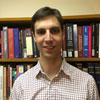In 1992, Pope Saint John Paul II gave a speech recognizing that the Catholic Church’s condemnation of Galileo, a famous 17th-century astronomer, was mistaken. Galileo held that the Earth revolved around the sun rather than the sun around the Earth. This was a point of contention because the Bible seems to affirm that it is indeed the earth that is the center point with the sun moving around it. For instance, Psalm 19 says that the sun is like a “bridegroom” that runs across the sky. In another example, verse 5 of Psalm 104 says that the foundations of the earth are “fixed” and “unshakable” (the precise wording depends upon the translation). The view that our planet is the center of the cosmos was the common view of the Ancient and Medieval world.
John Paul’s speech raises the question: Can the Catholic Church change its teaching? Before we jump to conclusions and exclaim, “yes”, based upon this example, it is helpful to call to mind that there are ways in which the Church has consistently proclaimed teachings, for example: that Jesus is God; that human beings are composed of body and soul; that God is a Trinity (Father, Son, and Holy Spirit). Examples of this sort are many. So how can believers explain why and in what ways church teaching can be altered?
I want to note two things before exploring this topic. First, it is absolutely essential to recognize from the start that not all church teaching is of equal importance. To use one example from above, the belief that God is a Trinity is of greater importance than the teaching on the value of fasting (Fasting is not unimportant, just less important.). This is significant because we need to consider not only what church teachings have been altered but how important such teachings are. Just because some teaching is changed does not mean that everything is “up for grabs.” Second, the church is open about the fact that some long-standing teaching is reformable. For instance, priestly celibacy is understood as very valuable but not essential to the church’s mission, which is demonstrated by the simple fact that priests were allowed to marry in the early church. With these two considerations in mind, let’s explore how Church teaching has changed regarding astronomy and biology.
While it would be overly ambitious to try to discuss in this article all of the reasons that could cause alterations in church teaching, we will focus on one type of occurrence that creates a dynamism resulting in such alterations: As human knowledge of the world increases, this influences religious belief in a way that can alter the Church’s self-understanding, especially what its own area of competence is versus what the area of competence is of other domains of knowledge (for example, scientific fields of knowledge). I want to focus on two of the natural sciences in this article: astronomy and biology.
As knowledge of the world increases, it can cause tension between particular teachings and the knowledge gained in various fields of study. To return to the example of Pope Saint John Paul II’s speech, it’s not simply that new scientific discoveries can challenge a particular teaching (though it certainly does this, at times), they can also change the boundary between what is considered the territory of religious knowledge versus what is regarded as the territory of science. In other words, these discoveries can raise the issue of what sort of things religion should make pronouncements about and what kind of things science (or some other field of study) should make pronouncements about.
In the case of Galileo, the issue of whether or not the earth is the center of the cosmos was thought by the Catholic Church of the 1600s to be something about which the Bible could make claims. Therefore, it read certain passages literally (for instance, Psalm 19 and Psalm 104 as noted in the first paragraph above). In short, the Church thought that claims about the Earth’s position in the cosmos belonged to the domain of religious knowledge. John Paul’s speech demonstrates that the Galileo affair resulted in a moving of the boundary between science and Christian teaching. He writes, “The majority of theologians [at the time of Galileo] did not recognize the formal distinction between Sacred Scripture and its interpretation, and this led them unduly to transpose into the realm of the [teaching] of the faith a question which in fact pertained to scientific investigation.”
Another shift in Catholic teaching occurred based on Charles Darwin’s theory that humans evolved from other animals. Before Darwin, it was generally assumed in Christian cultures that God created humans and all creatures directly and through immediate divine action, as this is narrated in the Bible’s creation stories. The Vatican never condemned (or validated) the theory of evolution as it did with Copernicus’s theory that the earth revolved around the sun, which was endorsed by Galileo. However, in 1860, the year after Darwin published his theory of evolution, the German Catholic bishops condemned it and endorsed the view that Adam and Eve were created immediately by God and these bishops were not rebuked by the Vatican. In 1943, the Vatican endorsed a more critical study of Scripture based upon an increase in historical knowledge and recognized explicitly that “past ages” did not have “almost all the information which was needed for their clearer exposition.” By the 1990s, evolution was looked upon favorably by Pope John Paul II based on the evidence scientists had put forth, and this theory is currently assumed in Vatican discussions of biological science.
Yet, even though these changes in church teaching have occurred, we should not fall into the trap of thinking that Christianity always reluctantly accepts what scientists put forth. Scientist and Protestant theologian, Ian Barbour, argues that the conception of a Creator God put forth by Christianity is significant for modern science since this conception is of a God who makes the universe in an ordered, patterned, and predictable way. Therefore, nature is thought to be intelligible and governed by divine laws that can be understood by humans. At the same time, traditional Christian belief does not view nature itself as divine, and this means that humans can both understand nature and can experiment with it. Today, we take for granted that nature operates in predictable ways that can be comprehended, but the degree to which nature’s operation was investigated in the modern period was both unprecedented and inspired by Christian belief. The relationship between scientific curiosity and religious belief is completely obvious in foundational figures of the scientific revolution as they refer to God explicitly in their scientific writings.
As we can see, there is a dynamic between religious belief and the accrual of knowledge of the world. Over time, the Vatican has clarified what the Church is capable of making authoritative judgments about. In short, the Vatican has marked out the territory of its competence as being that of faith and morals. In addition to marking its “territory” more clearly, the Vatican has also developed a way to signal different levels of authority, which is indicated by the different types of documents it issues. For example, a document issued by a single department of the Vatican does not carry as much weight as one produced by a meeting of bishops from around the world, an event known as an “ecumenical council,” which is what took place at the Second Vatican Council, commonly referred to as Vatican II.
In my view, one way to make better sense of the relationship between religious knowledge and other types of knowledge is to see these two sources of knowledge as forming a dynamic relationship with one another. While we can certainly distinguish these domains of knowledge in many ways, there is not always a hard line between them. Christians should not be surprised by this; for if we believe that God is the God of all Creation, then nothing should be excluded as a source of knowledge and all of reality should be understood as rooted in the divine.
Photo by Priscilla Du Preez


